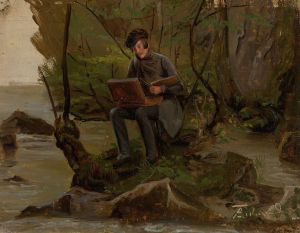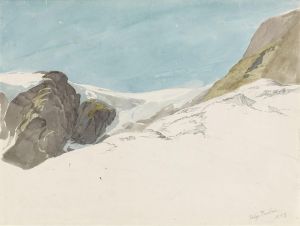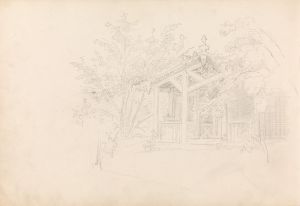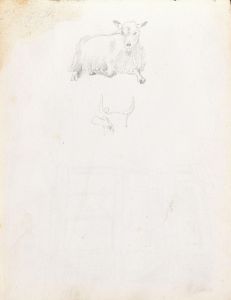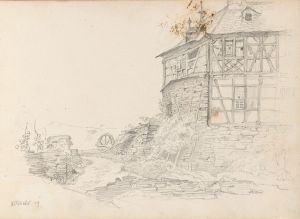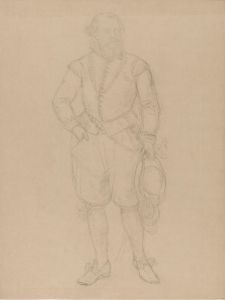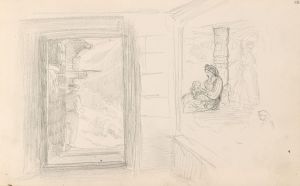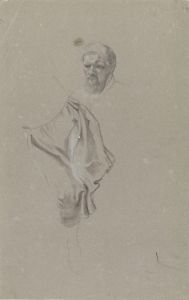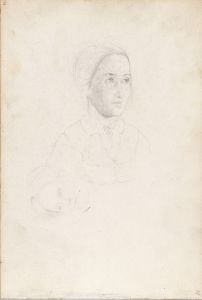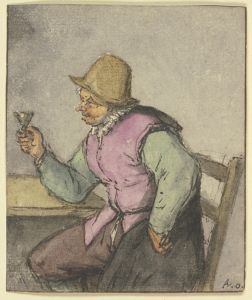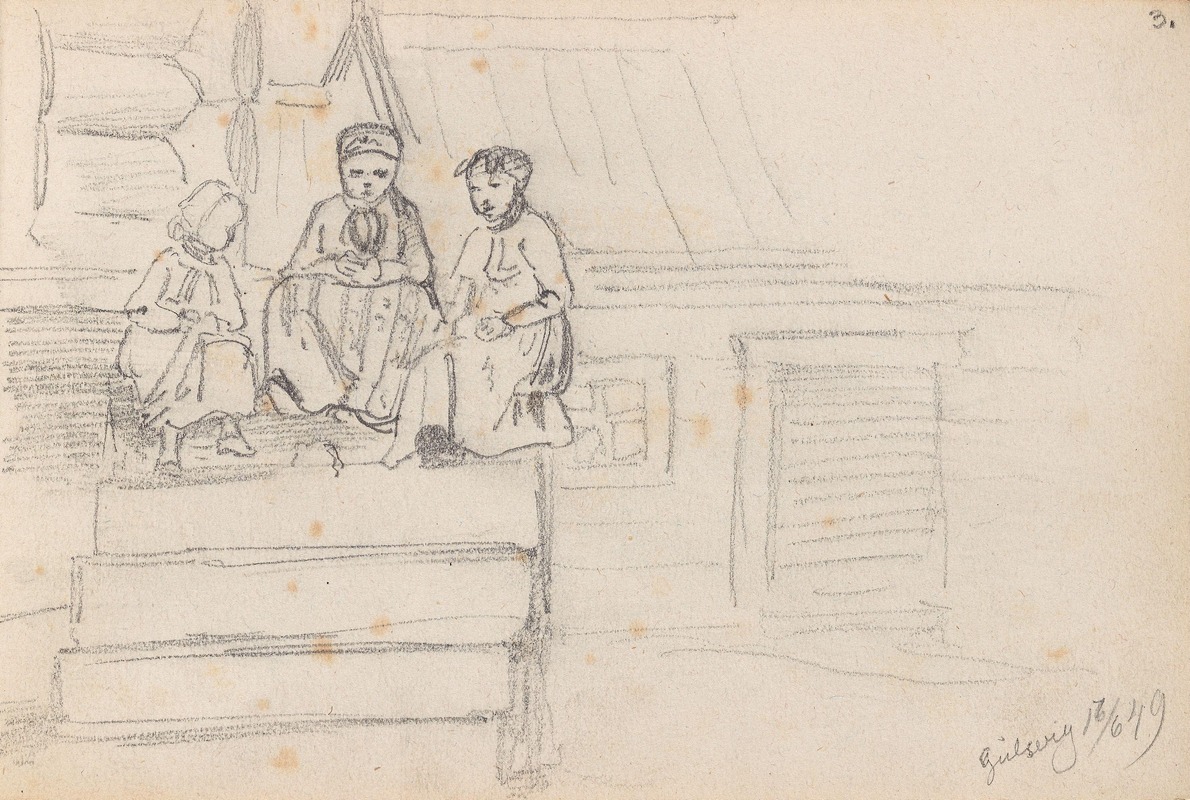
Figurer i trapp, Gulsvik
A hand-painted replica of Adolph Tidemand’s masterpiece Figurer i trapp, Gulsvik, meticulously crafted by professional artists to capture the true essence of the original. Each piece is created with museum-quality canvas and rare mineral pigments, carefully painted by experienced artists with delicate brushstrokes and rich, layered colors to perfectly recreate the texture of the original artwork. Unlike machine-printed reproductions, this hand-painted version brings the painting to life, infused with the artist’s emotions and skill in every stroke. Whether for personal collection or home decoration, it instantly elevates the artistic atmosphere of any space.
Adolph Tidemand's painting Figurer i trapp, Gulsvik (translated as Figures on a Staircase, Gulsvik) is a work by the renowned Norwegian artist Adolph Tidemand (1814–1876). Tidemand is widely recognized as one of the most significant painters of the Norwegian Romantic Nationalism movement, and his works often depict scenes of rural life, traditional customs, and Norwegian folk culture.
The painting portrays a group of figures on a staircase in Gulsvik, a small village in Norway. Gulsvik is located in the municipality of Flå in Viken County, an area known for its picturesque landscapes and traditional Norwegian architecture. The scene captures a moment of everyday life, with the figures arranged in a naturalistic manner, reflecting Tidemand's interest in documenting the lives and traditions of ordinary people during the 19th century.
Tidemand's artistic style is characterized by his attention to detail and his ability to convey the emotional depth of his subjects. In Figurer i trapp, Gulsvik, he employs a realistic approach, emphasizing the textures of the wooden staircase, the clothing of the figures, and the surrounding environment. This focus on realism aligns with his broader body of work, which often sought to preserve and celebrate Norwegian cultural heritage during a time of growing national identity.
The exact date of the painting's creation is not definitively documented, but it is consistent with Tidemand's broader artistic output during the mid-19th century. During this period, Tidemand frequently traveled throughout Norway, sketching and painting scenes that reflected the country's rural life and traditions. His works were highly regarded both in Norway and internationally, and he played a key role in shaping the visual representation of Norwegian identity.
Figurer i trapp, Gulsvik is part of Tidemand's legacy as an artist who sought to capture the essence of Norwegian life. While specific details about the individuals depicted in the painting or the exact context of the scene remain unclear, the work stands as an example of Tidemand's dedication to portraying the everyday experiences of his compatriots.
As with many of Tidemand's works, this painting contributes to the broader understanding of 19th-century Norwegian culture and society. It remains an important piece within the context of Norwegian art history, reflecting the themes of national pride and cultural preservation that were central to Tidemand's career.






